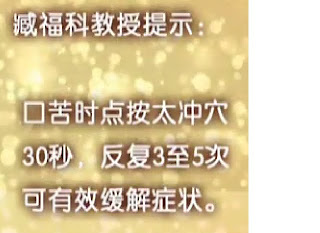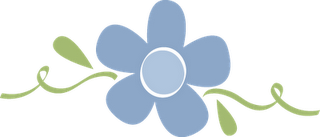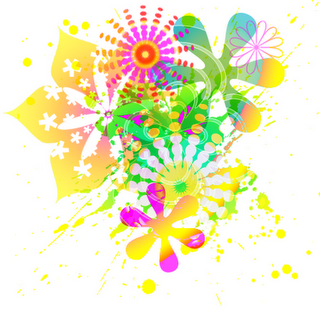Thursday, March 31, 2011
Longevity
Longevity is a dream and people living in five locations in the world are living it!
At the "2006 China Food and Nutrition High-level Forum" held in Beijing last week, the professionals from the State Food and Nutrition Consultant Committee of China released the names of the world’s five "longevity villages" where there are over 75 centenarians among every one million people. This is a standard set by the United Nations.
At the "2006 China Food and Nutrition High-level Forum" held in Beijing last week, the professionals from the State Food and Nutrition Consultant Committee of China released the names of the world’s five "longevity villages" where there are over 75 centenarians among every one million people. This is a standard set by the United Nations.
The five villages are: Hunza of Pakistan, Vilcabamba of Ecuador, Georgia of Transcaucasia, Bama of Guangxi Zhuang Autonomous Region and Hetian of Xinjiang Uygur Autonomous Region both of China. The five have been officially recognized by the International Natural Medicine Society.
Hunza Valley is located in northeast Pakistan about thirty kilometers away from the border of Xinjiang. It's reputed to be the inspiration of the original Shangri-La. With vegetables forming the main part of their diet the local people of Hunza don’t succumb to illness very often. It's been documented that the rates of cancer, heart disease and other degenerative illnesses are remarkably low in Hunza Valley. Many residents are still 'in the pink' when they celebrate their 100th birthdays. Many still work in the fields even in their 80s and 90s.
Known worldwide as the "valley of longevity" in the western hemisphere Vilcabamba is located in the southern mountainous area of Ecuador. The local people there often live to 100 or even longer. They mainly eat vegetarian dishes and seldom meat or high-calorie food.
The total population of Georgia in Transcaucasia is only about 9.5 million and it can proudly boast the highest number of elderly people anywhere in the world. In fact in the local Caucasian dialects there's no word for "elderly" or "aged" but just the unusual expression "long-centuried." Many people in the Georgia area live to 130 or even 140 years of age. The staple food of the local people is corn bread and porridge. They don’t eat sausage, bacon or ham and their drinking water contains some alkaline elements.
Bama, a Yao ethnic autonomous county, is located on the slopes of the Guangxi Basin and Yunnan-Guizhou Plateau in southwest China. As the home of many centenarians Bama is the only one among the five "longevity villages" that the number of elderly people continues to rise.
With a population of 238,000 the county has 74 residents who are over 100 years old and 531 in their 90s. This is one of the highest per-capita concentrations of ‘old-timers’ in the world. In Bama the daily diet for locals is mainly low-calorie, low-fat, low-salt, high-vitamin and high-fibrin. The residents often have one meal of rice and two meals of porridge everyday which is almost a completely natural diet.
Over the years the Hetian area in Xingjiang Uygur Region has become world famous for its older inhabitants and their special genes especially the Layisu Village. There are 2,400 residents in the village of whom 16 have reached the age of 90. Corn, steamed buns and vegetables form the main part of their diets. It accounts for 77.3 percent of their daily food intake.
According to experts, longevity is closely related to the diet. Five points should be considered: Firstly, to eat vegetables as the main diet; secondly, to balance the proportion of vegetarian food and meat; thirdly, to keep the content of calorie and protein in food at a reasonable level; fourthly, to ensure the intake of fat and salt are low with the fat structure well-balanced; and fifth, to ensure the intake of enough minerals and to balance the proportion of acid and alkaline food.
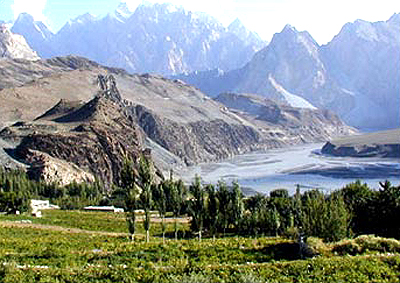 |
Hunza of Pakistan
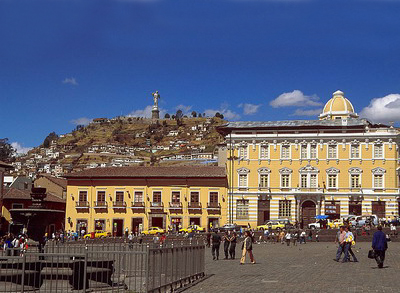 |
Vilcabamba of Ecuador
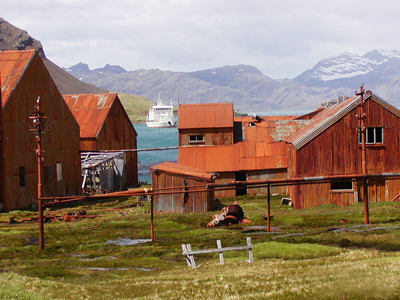 |
Georgia of Transcaucasia
 |
Bama of Guangxi
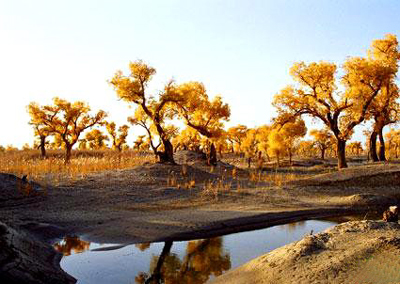 |
Hetian of Xinjiang
Wednesday, March 30, 2011
Sunday, March 27, 2011
五行学说
阴阳五行学说是我国古代朴素的辨证唯物的哲学思想。因此,古代医学家借用阴阳五行学说来解释人体生理、病理的各种现象,并用以指导总结医学知识和临床经验,这就逐渐形成了以阴阳五行学说为基础的祖国医学理论体系。
五行学说
一、五行学说的概念
五行学说同“阴阳学说”一样,它也是一种哲学概念,是一种认识和分析事物的思想方法。
“五行”,就是自然界中“木、火、土、金、水”这五类物质的运动。
“五行学说”是指这五类物质的运动变化,以及它们之间的相互关系,以相生、相克作为解释事物之间相互关联及运动变化规律的说理工具。
祖国医学中,首先以归类的方法,说明人体各部位之间,与外在环境之间的相互关系,其次是在五行归类的基础上,以五脏为中心,以五行的相生、相克关系,说明人体各部之间在生理过程中的关系。在病理情况下,也以这种关系分析判断病情。
五行的属性:
木-代表生气旺盛的-“木曰曲直”。
火-代表炎热的、向上的-“火曰炎上”。
土-代表具有营养作用的-“土曰稼穑”。
金-代表具有摧残杀伤作用的-“金曰从革”。
水-代表寒冷的、向下的-“水曰润下”。
二、五行学说的内容
(一)五行学说的基本规律
1.相生规律:生,含有资生、助长、促进的意义。五行之间,都具有互相资生、互相助长的关系。这种关系简称为“五行相生”。
五行相生的次序是:木生火,火生土,土生金,金生水,水生木。在五行相生的关系中,任何一行都具有生我,我生两方面的关系,也就是母子关系。生我者为母、 我生者为子。以水为例,生我者为金,则金为水之母;我生者是木,则木为水之子。其它四行,以此类推。由于肝属木,心属火,脾属土,肺属金,肾属水,结合五 脏来讲,就是肝生心,心生脾,脾生肺,肺生肾,肾生肝起资生和促进作用。
2.相克规律:克,含有制约、阻抑、克服的意义。五行之间,都具有相互制约、相互克服,相互阻抑的关系,简称“五行相克”。
五行相克的次序是:木克土,土克水,水克火,火克金,金克木.。在五行相克的关系中,任何一行都具有克我、我克两方面的关系,也就是“所胜”、“所不胜” 的关系。克我者为“所不胜”,我克者为“所胜”。以木为例,克我者为金,则金为木之“所不胜”,我克者为土,则土为木之“所胜”。其它四行,以此类推。结 合五脏来讲,就是肝克脾,脾克肾,肾克心,心克肺、肺克肝,起着制约和阻抑的作用。
3.五行制化:在五行相生之中,同时寓有相克,在相克之中,同时也寓有相生。这是自然界运动变化的一般规律。如果只有相生而无相克,就不能保持正常的平衡 发展;有相克而无相生,则万物不会有生化。所以相生,相克是一切事物维持相对平衡的两个不可缺少的条件。只有在相互作用,相互协调的基础上,才能促进事物 的生化不息。例如,木能克土,但土却能生金制木。因此,在这种情况下,土虽被克,但并不会发生偏衰。其它火、土、金、水都是如此。古人把五行相生寓有相克 和五行相克寓有相生的这种内在联系,名之曰“五行制化”。制化规律的具体情况如下:
木克土,土生金,金克木。
火克金,金生水,水克火。
土克水,水生木,木克土。
金克木,木生火,火克金。
水克火,火生土,土克水。
4.相乘规律:乘,是乘袭的意思。从五行生克规律来看,是一种病理的反常现象。相乘与相克意义相似,只是超出了正常范围,达到了病理的程度。相乘与相克的 次序也是一致的。即是木乘土,土乘水,水乘火、火乘金,金乘木。如木克土,当木气太过,金则不能对木加以正常的制约,因此,太过无制的木乘土,即过强的木 克土,土被乘更虚,而不能生金,故金虚弱,无力制木。
5.相侮规律:侮,是欺侮的意思。从五行生克规律来看,与相乘一样,同样属于病理的反常现象。但相侮与反克的意义相似,故有时又曰反侮。相侮的次序也与相克相反,即是:木侮金,金侮火,火侮水,水侮土,土侮木。
以上相乘、相侮的两个规律,都是在病理情况下才会产生,例如,水气有余,便克害火气(图所胜),同时又会反过来侮土(所不胜)。如果水气不足,则土来乘之(所不胜),火来侮之(图所胜)。这都是由于太过和不及出现的反常现象。
(二)自然与人体结构、机能的五行分属
祖国医学理论,不仅认为人体各部分是一个整体,而且认为人体与外在自然境,也有其相应的关系。为了说明体内体外的整体性和它们之间复杂的关系,在祖国医学 中,便以五行为中心,按照它的各个特性,用取类比象的方法,将自然界和人体有关的事物按其属性,形态现象相类同的,分别归纳,成为五大类。其主要目的是便 利于了解各种事物之间的关系,并作为观察事物变化的推演法则。见表2-1。
一、五行学说的概念
五行学说同“阴阳学说”一样,它也是一种哲学概念,是一种认识和分析事物的思想方法。
“五行”,就是自然界中“木、火、土、金、水”这五类物质的运动。
“五行学说”是指这五类物质的运动变化,以及它们之间的相互关系,以相生、相克作为解释事物之间相互关联及运动变化规律的说理工具。
祖国医学中,首先以归类的方法,说明人体各部位之间,与外在环境之间的相互关系,其次是在五行归类的基础上,以五脏为中心,以五行的相生、相克关系,说明人体各部之间在生理过程中的关系。在病理情况下,也以这种关系分析判断病情。
五行的属性:
木-代表生气旺盛的-“木曰曲直”。
火-代表炎热的、向上的-“火曰炎上”。
土-代表具有营养作用的-“土曰稼穑”。
金-代表具有摧残杀伤作用的-“金曰从革”。
水-代表寒冷的、向下的-“水曰润下”。
二、五行学说的内容
(一)五行学说的基本规律
1.相生规律:生,含有资生、助长、促进的意义。五行之间,都具有互相资生、互相助长的关系。这种关系简称为“五行相生”。
五行相生的次序是:木生火,火生土,土生金,金生水,水生木。在五行相生的关系中,任何一行都具有生我,我生两方面的关系,也就是母子关系。生我者为母、 我生者为子。以水为例,生我者为金,则金为水之母;我生者是木,则木为水之子。其它四行,以此类推。由于肝属木,心属火,脾属土,肺属金,肾属水,结合五 脏来讲,就是肝生心,心生脾,脾生肺,肺生肾,肾生肝起资生和促进作用。
2.相克规律:克,含有制约、阻抑、克服的意义。五行之间,都具有相互制约、相互克服,相互阻抑的关系,简称“五行相克”。
五行相克的次序是:木克土,土克水,水克火,火克金,金克木.。在五行相克的关系中,任何一行都具有克我、我克两方面的关系,也就是“所胜”、“所不胜” 的关系。克我者为“所不胜”,我克者为“所胜”。以木为例,克我者为金,则金为木之“所不胜”,我克者为土,则土为木之“所胜”。其它四行,以此类推。结 合五脏来讲,就是肝克脾,脾克肾,肾克心,心克肺、肺克肝,起着制约和阻抑的作用。
3.五行制化:在五行相生之中,同时寓有相克,在相克之中,同时也寓有相生。这是自然界运动变化的一般规律。如果只有相生而无相克,就不能保持正常的平衡 发展;有相克而无相生,则万物不会有生化。所以相生,相克是一切事物维持相对平衡的两个不可缺少的条件。只有在相互作用,相互协调的基础上,才能促进事物 的生化不息。例如,木能克土,但土却能生金制木。因此,在这种情况下,土虽被克,但并不会发生偏衰。其它火、土、金、水都是如此。古人把五行相生寓有相克 和五行相克寓有相生的这种内在联系,名之曰“五行制化”。制化规律的具体情况如下:
木克土,土生金,金克木。
火克金,金生水,水克火。
土克水,水生木,木克土。
金克木,木生火,火克金。
水克火,火生土,土克水。
4.相乘规律:乘,是乘袭的意思。从五行生克规律来看,是一种病理的反常现象。相乘与相克意义相似,只是超出了正常范围,达到了病理的程度。相乘与相克的 次序也是一致的。即是木乘土,土乘水,水乘火、火乘金,金乘木。如木克土,当木气太过,金则不能对木加以正常的制约,因此,太过无制的木乘土,即过强的木 克土,土被乘更虚,而不能生金,故金虚弱,无力制木。
5.相侮规律:侮,是欺侮的意思。从五行生克规律来看,与相乘一样,同样属于病理的反常现象。但相侮与反克的意义相似,故有时又曰反侮。相侮的次序也与相克相反,即是:木侮金,金侮火,火侮水,水侮土,土侮木。
以上相乘、相侮的两个规律,都是在病理情况下才会产生,例如,水气有余,便克害火气(图所胜),同时又会反过来侮土(所不胜)。如果水气不足,则土来乘之(所不胜),火来侮之(图所胜)。这都是由于太过和不及出现的反常现象。
(二)自然与人体结构、机能的五行分属
祖国医学理论,不仅认为人体各部分是一个整体,而且认为人体与外在自然境,也有其相应的关系。为了说明体内体外的整体性和它们之间复杂的关系,在祖国医学 中,便以五行为中心,按照它的各个特性,用取类比象的方法,将自然界和人体有关的事物按其属性,形态现象相类同的,分别归纳,成为五大类。其主要目的是便 利于了解各种事物之间的关系,并作为观察事物变化的推演法则。见表2-1。
表2-1 五行归类
| 五行 | 木 | 火 | 土 | 金 | 水 |
| 方位 | 东 | 南 | 中 | 西 | 北 |
| 天干 | 甲乙 | 丙丁 | 戊己 | 庚辛 | 壬癸 |
| 地支 | 寅卯 | 巳午 | 辰戌 丑未 | 申酉 | 子亥 |
| 四季 | 春 | 夏 | 长夏 | 秋 | 冬 |
| 五形 | 矩形 | 尖形 | 方形 | 圆形 | 波形 |
| 五色 | 青 | 赤 | 黄 | 白 | 黑 |
| 五味 | 酸 | 苦 | 甘 | 辛 | 咸 |
| 五志 | 怒 | 喜 | 思 | 忧 | 恐 |
| 五智 | 仁 | 礼 | 信 | 义 | 智 |
| 五脏 | 肝 | 心 | 脾 | 肺 | 肾 |
| 五腑 | 胆 | 小肠 | 胃 | 大肠 | 膀胱 |
| 五官 | 目 | 舌 | 唇 | 鼻 | 耳 |
| 五体 | 筋 | 脉 | 肉 | 皮毛 | 骨 |
| 五魄 | 魂 | 神 | 意 | 魄 | 精 |
| 五气 | 风 | 暑 | 湿 | 燥 | 寒 |
| 五化 | 生 | 长 | 化 | 收 | 藏 |
| 五温 | 温 | 热 | 自然 | 凉 | 寒 |
| 六神 | 青龙 | 朱雀 | 勾陈 腾蛇 | 白虎 | 玄武 |
从表中可以看出,每一行所属各种现象之间的关系,也可能说明事物变化发展互相推移的综合关系。例如,以木来说,春季草木开始萌芽生长,呈现了蓬勃的生气, 并出现青的颜色,故用木来象征春。在生长化收藏的过程中,属于“生”的一环。春季多风,结合人体肝脏性喜条达舒畅,象征着木和春的情况。而五脏中的肝和六 腑中的胆是表里关系,肝又开窍于目,在五体中主筋,故肝病每多出现目病或抽筋(痉挛)的症状。肝木旺者多喜怒,而大怒又易伤肝,所以在五志中主怒。某些肝 病,往往会出现青的颜色。
把以上这些自然现象和生理与病理现象联系在一起,就可以把木、春、肝、胆、目、筋、怒、青等一系列的事物和现象,归属于木的一类之下,形成了一个系统。
若是从横的方面来看,则亦有明显联系,就以五行本身来说,木生火,火生土,土生金,金生水……,就是明显的横的联系。
(三)五行学说在临床中的应用
中医学运用五行的生克乘侮规律来解释五脏病变的相互影响关系,利用调整五脏间生克乘侮关系来治病。如:①肝木乘脾土,则临床上见肝脾不和证,治疗时一般是 采取“培土抑木”(疏肝健脾)的方法。②肾生肝,(水生木)肾精能滋养肝脾不和证,即“水能生木”,当“肾水”不足时,肝木失养,病人出现“肝阳上亢”等 水不涵木的病证,治疗时要滋水涵木,肝阳上亢的证候可以得到改善。③肾助脾(火生土),脾的运化功能需要肾阳的帮助才能正常进行,如果肾阳虚导致脾阳虚, 临床上出现脾肾阳虚证,产生腹泻、水肿等证。治宜温补肾火,资助脾阳(温肾健脾)的方法。④脾益肺(土生金),脾气健运,将饮食精微运输给肺,从而保持肺 的功能正常,脾虚精微不升,废浊不降,容易产生痰湿,出现痰多,咳嗽等肺的症状,治疗则需健脾化痰,即“培土生金”健脾补肺的方法治疗,往往取得较好的效 果。⑤肾济心(水火相济),肾主水,心主火,肾藏精。正常时,心肾互济,心助肾以阳,肾助心以阴,互相交往,保持平衡状态,中医叫“心肾相交”。如肾水不 足,则不能滋润心阳,就会引起心火亢盛的症状,出现“心肾不交证。”治疗应当滋肾水(阴)降心火,使病证得以痊愈。
总之,懂得这些规律,可以帮助加深对中医病因,病理的理解。治疗方面,同样利用五行关系,指导临床实践,仍有一定意义。
Thursday, March 24, 2011
Tuesday, March 22, 2011
Subscribe to:
Comments (Atom)














